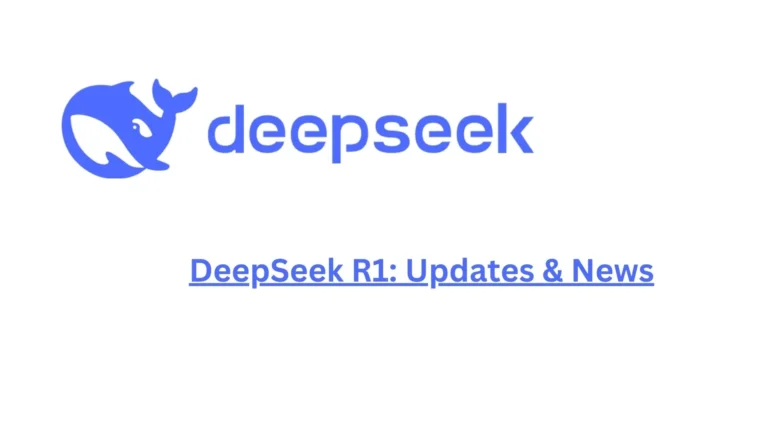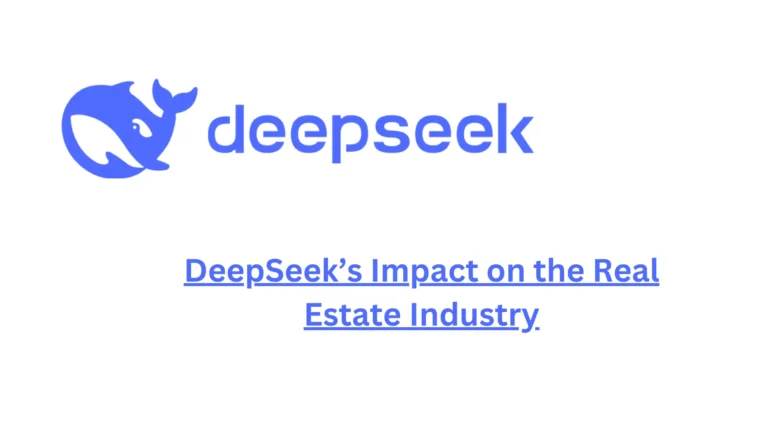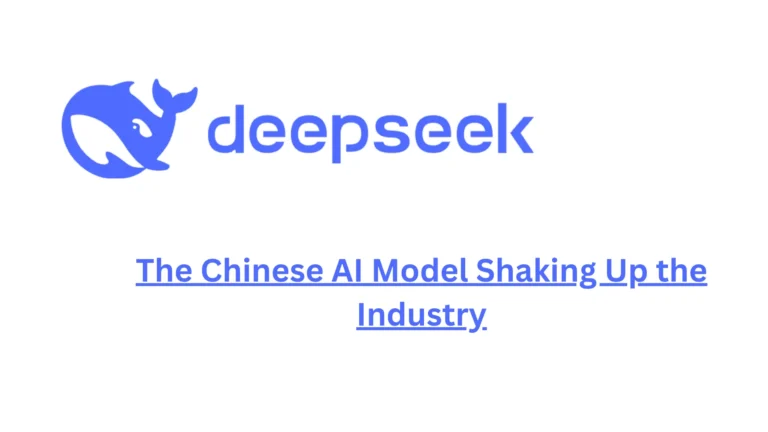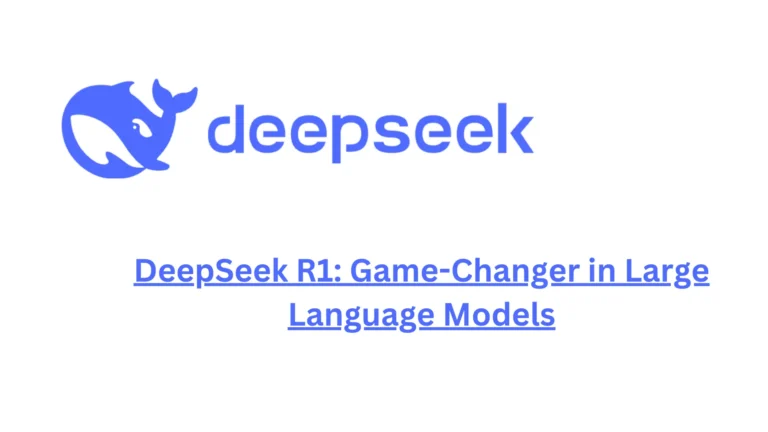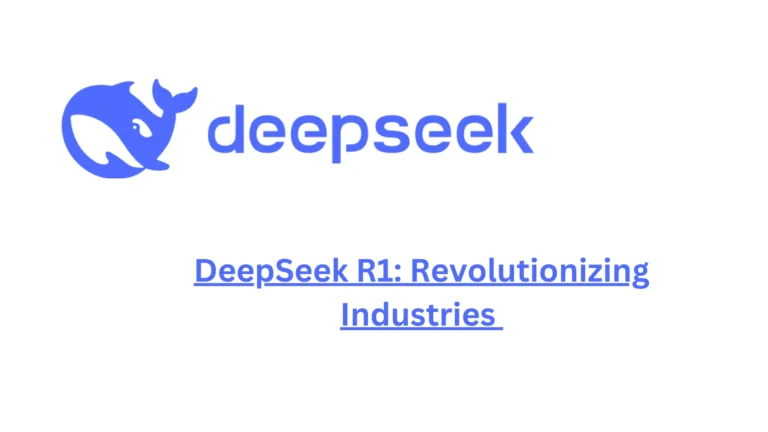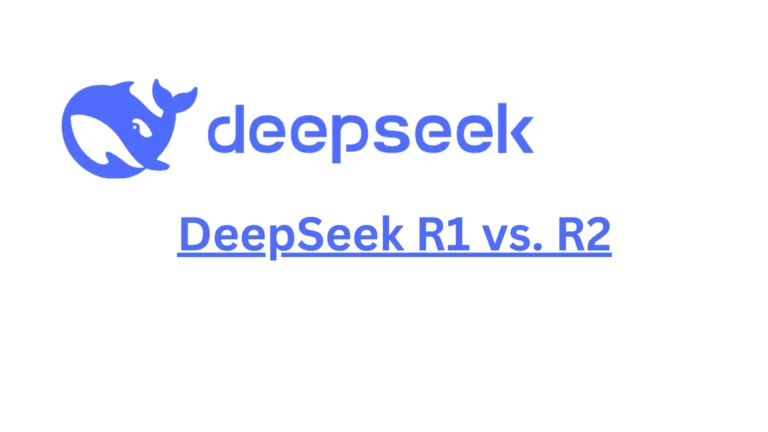The world of Artificial Intelligence (AI) is rapidly evolving, with new models continuously raising the bar in terms of capabilities, efficiency, and application versatility. Among the most talked-about models today are DeepSeek R1 and DeepSeek V3. These models, developed by DeepSeek, represent the cutting edge in AI, each bringing a unique set of strengths to the table.
In this blog, we will provide an in-depth, detailed comparison of these two AI models—DeepSeek R1 and DeepSeek V3. Both models share a common foundation in the Mixture of Experts (MoE) architecture but diverge in their design philosophies, capabilities, and best use cases. Our goal is to help you understand which model is better suited for your specific needs, be it for coding, problem-solving, content generation, or real-time applications.
By the end of this article, you’ll have a clear understanding of the differences between these two models and how they perform in real-world scenarios. Whether you’re an AI researcher, developer, or business owner, this comprehensive comparison will guide you toward making the right choice.
DeepSeek R1 vs DeepSeek V3: Why This Comparison Matters
The choice between DeepSeek R1 and DeepSeek V3 isn’t just about picking one model over the other. It’s about selecting the right AI model to cater to specific needs and future-proofing your projects in an ever-changing technological landscape. This comparison is crucial for understanding:
- Processing power: How fast and efficient are these models?
- Language capabilities: Which model better understands and generates human-like text?
- Real-world applications: Where are these models best utilized?
- Cost-effectiveness: Which model offers better value for money in terms of token costs and resource usage?
DeepSeek R1: An Overview
DeepSeek R1 is an advanced AI model designed with a focus on logical reasoning, problem-solving, and self-verification. Unlike typical AI models, R1 leverages Reinforcement Learning (RL) to enhance its reasoning ability, making it well-suited for complex tasks requiring in-depth analysis and precision.
Key Strengths:
- Reinforcement Learning (RL): The primary advantage of R1 lies in its reinforcement learning approach, which improves its logical and decision-making abilities.
- Problem-Solving: R1 excels in technical problem-solving, mathematics, and structured tasks, making it a great tool for tasks that require clear logic and reasoning.
- Customizable: R1 is designed to handle niche tasks, such as scientific research, where precision is paramount.
Parameter Size:
DeepSeek R1 comes in distilled versions, ranging from 1.5 billion to 70 billion parameters. This flexibility allows users to choose an R1 model that best fits their computational resources and specific use case.
Best Use Cases:
- Education: Ideal for creating intelligent educational tools and AI-driven research applications.
- Technical and Research Applications: R1 excels at research-oriented tasks that require deep logical reasoning, such as mathematical proofs and theoretical research.
DeepSeek V3: An Overview
DeepSeek V3 is a large general-purpose language model designed to be versatile and efficient. Based on the Mixture-of-Experts (MoE) architecture, it combines multiple experts to perform tasks with reduced computational overhead, enabling large-scale performance across a variety of domains.
Key Strengths:
- Scalability and Efficiency: The MoE architecture allows DeepSeek V3 to activate only a subset of parameters per token, optimizing for speed and computational efficiency.
- Multitasking: V3 is capable of handling a variety of tasks simultaneously, such as coding, mathematics, reasoning, and multilingual tasks.
- Multilingual Capabilities: V3’s extensive training data spans numerous languages, making it ideal for multilingual applications.
Parameter Size:
DeepSeek V3 is a massive model, with 671 billion parameters and 37 billion activated per token, which means it is designed to handle complex tasks across multiple domains without compromising speed.
Best Use Cases:
- Research: Well-suited for academic and industry researchers who need a robust, versatile AI for complex analyses and nuanced interactions.
- Multitasking: V3 excels in general-purpose applications, especially where scalability, speed, and adaptability are important.
DeepSeek R1 vs V3: Core Differences
To provide a clearer perspective, let’s examine the core differences between DeepSeek R1 and V3 in a detailed comparison table:
| Feature | DeepSeek R1 | DeepSeek V3 |
|---|---|---|
| Processing Speed | Optimized for fast response times | Slightly slower but more accurate in complex tasks |
| Language Comprehension | Strong, concise outputs | Enhanced, with a deeper understanding of context and nuance |
| Architecture | Reinforcement Learning (RL) | Mixture-of-Experts (MoE) |
| Reasoning Ability | Good, structured tasks | Advanced reasoning and problem-solving |
| Training Dataset | Reinforcement learning for reasoning | Coding, mathematics, multilingualism |
| Real-World Applications | Quick content generation, coding tasks | Research, complex analysis, nuanced interactions |
| Customization | Limited customization options | More flexible, allowing deeper customization for specific tasks |
| Latency | Low latency, high-speed performance | Slightly higher latency due to more processing power |
| Best Use Case | Speed and accuracy for structured tasks | In-depth understanding and reasoning |
| Parameter Range | 1.5B to 70B | 671B |
| Open Source | Yes | Yes |
Real-World Comparison: DeepSeek R1 vs V3
Both models have unique strengths that make them ideal for different use cases. Let’s break down their performance in specific real-world scenarios:
1. Technical Problem-Solving (e.g., Coding, Math)
- DeepSeek R1:
- Strengths: R1 excels in niche technical tasks, such as debugging legacy code or solving complex math problems, where logical precision is critical.
- Weaknesses: Struggles with broader context, such as explaining solutions to non-experts or integrating real-time knowledge like APIs.
- Use Case: A researcher using R1 to generate proofs for complex computer science problems.
- DeepSeek V3:
- Strengths: V3 handles general coding tasks better, especially in modern frameworks (React, TensorFlow) and is great at simplifying explanations for non-experts.
- Weaknesses: Might sacrifice some niche expertise for greater versatility.
- Use Case: A startup engineer using V3 to develop web apps with real-time troubleshooting.
2. Creative Content Generation
- DeepSeek R1:
- Strengths: R1 is well-suited for structured creativity, such as technical writing, academic summaries, or legal documents.
- Weaknesses: R1 may struggle to adjust tone and style, making it less ideal for creative writing tasks.
- Use Case: Drafting a research paper’s methodology section.
- DeepSeek V3:
- Strengths: V3 shines in dynamic creativity, such as marketing copy, storytelling, and social media posts, with excellent contextual awareness.
- Weaknesses: May overgeneralize in highly technical domains.
- Use Case: Writing engaging product descriptions for an e-commerce site.
3. Real-Time Efficiency & Scalability
- DeepSeek R1:
- Performance: Faster inference on low-resource hardware, such as edge devices and legacy systems.
- Limitation: Struggles with large-scale concurrent requests.
- Use Case: Embedded in IoT devices for localized language processing.
- DeepSeek V3:
- Performance: Optimized for high-throughput environments, handling thousands of requests simultaneously.
- Limitation: Requires more robust infrastructure, such as GPU clusters and high RAM.
- Use Case: Powering a global SaaS platform’s AI features.
Performance Comparison
Below is a detailed comparison of how DeepSeek R1 and DeepSeek V3 perform across several key categories:
| Category | DeepSeek R1 | DeepSeek V3 |
|---|---|---|
| Speed (Inference) | Faster on low-resource hardware | Optimized for high-throughput cloud setups |
| Accuracy (Niche Tasks) | Higher in specialized domains | Slightly lower in niche tasks, more balanced |
| Generalization | Struggles with broad/ambiguous queries | Excels at multi-context, real-world scenarios |
| Scalability | Limited to small-scale deployments | Built for large-scale enterprise workloads |
| Creativity & Fluency | Rigid, formulaic output | Dynamic, adaptable to tone/style |
| Safety/Alignment | Basic filters, potential bias risks | Advanced ethical guardrails (e.g., RLHF) |
| Training Data Freshness | Likely older, domain-specific datasets | Updated with recent, diverse data (2023+) |
| Model Interpretability | Transparent, but can be opaque | More opaque due to complexity of MoE architecture |
Read More: DeepSeek R1 vs. R2
Case Studies: Testing DeepSeek R1 vs DeepSeek V3
To truly understand the performance of these models, let’s explore how DeepSeek R1 and V3 perform in a series of tests. Below are some hands-on comparisons based on real-world applications:
Q1: Which number is bigger, 9.11 or 9.9?
- DeepSeek R1: Correct ✅
- DeepSeek V3: Correct ✅
Both models perform similarly in basic numerical comparisons.
Q2: How many r’s are in the word ‘Strawberry’?
- DeepSeek R1: Incorrect ❌
- DeepSeek V3: Correct ✅
Here, DeepSeek V3 outperforms DeepSeek R1 in simple tasks that involve counting characters in words.
Q3: Give me 10 sentences that end in the word ‘apple’.
- DeepSeek R1: Correct ✅
- DeepSeek V3: Incorrect ❌
DeepSeek R1 excels in structured tasks like generating sentences with specific patterns, while DeepSeek V3 struggles to generate text that adheres to the rule.
Q4: Create the game of snake in Python that I can play in my terminal.
- DeepSeek R1: Correct ✅
- DeepSeek V3: Correct ✅
Both models successfully create a working version of the Snake game in Python, demonstrating their abilities in coding tasks.
Cost Comparison
Here’s a breakdown of the token costs for both models, comparing them to other popular AI models:
| Model | Input Cost (1M tokens) | Output Cost (1M tokens) |
|---|---|---|
| DeepSeek R1 | $0.55 | $2.19 |
| DeepSeek V3 | $0.27 | $1.10 |
| GPT-4o | $2.50 | $10.00 |
| o1 | $15.00 | $60.00 |
Cost Takeaways:
- For non-reasoning tasks, DeepSeek V3 is 10x cheaper than GPT-4o.
- For reasoning tasks, DeepSeek R1 is 27x cheaper than o1.
This cost efficiency makes DeepSeek an incredibly attractive option for those looking to build scalable AI applications without breaking the bank.
Quality: MMLU Benchmark Comparison
The MMLU (Massive Multitask Language Understanding) benchmark tests AI models across a wide range of tasks, from basic to complex. Below are the results:
| Model | MMLU Benchmark Score |
|---|---|
| DeepSeek R1 | 90.8% |
| DeepSeek V3 | 88.5% |
| GPT-4o | 88.7% |
| o1 | 91.8% |
Quality Takeaways:
- DeepSeek R1 and DeepSeek V3 are strong contenders in terms of benchmark performance, with DeepSeek R1 closely competing with GPT-4o.
- Although o1 slightly outperforms DeepSeek in MMLU, DeepSeek R1 and V3 have the edge when it comes to cost and efficiency, making them great value for money.
Conclusion: Which Model Should You Choose?
Both DeepSeek R1 and DeepSeek V3 have distinct advantages depending on your specific needs.
- Choose DeepSeek R1 if your goal is to solve complex, structured tasks quickly and efficiently. Its reinforcement learning approach makes it ideal for precise, logical problem-solving in research or academia. Its lightweight nature also makes it a great choice for edge devices or small-scale applications.
- Choose DeepSeek V3 if you need a model that excels in versatility and scalability across various real-world applications. Its MoE architecture allows it to tackle diverse tasks, from creative content generation to coding and research, with a focus on efficiency and performance in high-demand environments.
Read More: DeepSeek vs. LLaMA vs. Mistral
FAQs
What is the main difference between DeepSeek R1 and DeepSeek V3?
The main difference between DeepSeek R1 and DeepSeek V3 lies in their processing capabilities. DeepSeek R1 is optimized for speed and efficiency, making it ideal for tasks that require quick responses such as content creation and coding. In contrast, DeepSeek V3 excels in complex reasoning and can handle multi-domain tasks while offering a deeper understanding of language, context, and nuances.
Which model is better for coding tasks?
DeepSeek R1 is better suited for niche coding tasks, especially those requiring precision, like debugging older code. However, DeepSeek V3 is more versatile and performs better in general coding tasks, particularly with modern frameworks and applications.
Which model performs better in creative writing?
DeepSeek V3 is better at creative writing due to its ability to adapt its tone and style dynamically, creating more engaging and natural content. DeepSeek R1 is more structured and works best for technical writing or tasks that require precise, formulaic outputs.
How do the two models compare in terms of processing speed?
DeepSeek R1 is optimized for high-speed performance, making it the ideal choice for tasks that require quick responses. While DeepSeek V3 is slightly slower due to its advanced capabilities, it offers greater accuracy for complex tasks and reasoning.
Which model is more flexible for customization?
DeepSeek V3 offers more customization options, enabling users to adjust the model for specific tasks and requirements. DeepSeek R1, on the other hand, has limited customization capabilities and is more focused on structured tasks and reasoning.
Is DeepSeek R1 or V3 better for large-scale operations?
DeepSeek V3 is better suited for large-scale operations. Its MoE (Mixture-of-Experts) architecture allows it to handle multiple tasks simultaneously and scale effectively for high-demand environments, such as cloud computing and enterprise workloads. DeepSeek R1 is better suited for smaller, more localized tasks.
Which model is more energy-efficient?
DeepSeek R1 is more energy-efficient because it has a lower computational footprint. While DeepSeek V3 is more powerful and can handle complex tasks, it demands more computational resources for such tasks, which makes it less energy-efficient compared to R1.
Can both models handle multilingual tasks?
DeepSeek R1 has limited multilingual capabilities, primarily focusing on English and other widely spoken languages. In contrast, DeepSeek V3 excels in handling multiple languages and works well across various linguistic contexts, making it ideal for multilingual applications.
Which model should I choose for research applications?
For research tasks that require complex reasoning, in-depth analysis, and nuanced understanding, DeepSeek V3 is the better option. It provides advanced reasoning abilities and handles complex, research-oriented tasks more effectively than DeepSeek R1.
When were DeepSeek V3 and DeepSeek R1 released?
DeepSeek V3 was released on December 27, 2024, and DeepSeek R1 followed on January 21, 2025. DeepSeek R1 features significant improvements in reasoning and structured thought generation, specifically designed for tasks requiring logical analysis.
Read More: DeepSeek vs ChatGPT vs Gemini

